This is the first entry in our series breaking down the significant trades of the 2022/23 season. As opposed to giving out grades, this series explores why the teams were motivated to make the moves. Let’s dive into a deal between the Lakers and Wizards…
On January 23, the Lakers sent Kendrick Nunn, the Bulls’ 2023 second-round pick, a 2028 second-round pick, and their own 2029 second-round pick to the Wizards in exchange for Rui Hachimura.
The Lakers’ perspective:
After missing the entire 2021/22 season with a somewhat mysterious knee injury (it was described as a bone bruise), Nunn picked up his $5.25MM player option for the 2022/23 season and Los Angeles had high hopes for his return to action.
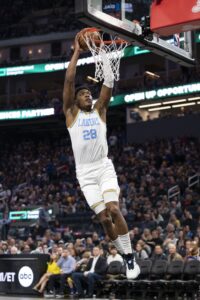 Unfortunately, he had a miserable start to the season, averaging just 5.2 PPG, 1.1 RPG and 0.9 APG on .365/.308/.923 shooting through 29 games (11.5 MPG). Nunn’s primary skill is his ability to score, and he wasn’t having much success at it.
Unfortunately, he had a miserable start to the season, averaging just 5.2 PPG, 1.1 RPG and 0.9 APG on .365/.308/.923 shooting through 29 games (11.5 MPG). Nunn’s primary skill is his ability to score, and he wasn’t having much success at it.
Entering the season, the Lakers had six players on their roster who primarily played guard: Nunn, Dennis Schröder, Austin Reaves, Russell Westbrook, Lonnie Walker and Patrick Beverley. Of the six, only Walker (6’4″) and Reaves (6’5″) are taller than 6’3″. Nunn was last among the group on depth chart.
Head coach Darvin Ham had to cobble together some extremely small lineups due to the team’s flawed roster construction – Schröder, Westbrook, Walker and Beverley were third through seventh on the team in minutes per game at the time of this trade, trailing only LeBron James and Anthony Davis.
At the two forward spots, the Lakers had Troy Brown Jr., Max Christie and Juan Toscano-Anderson, all of whom are 6’6″. Wenyen Gabriel (6’9″) has played both power forward and center. And then James (6’9″) at power forward.
Obviously, size, strength and athleticism was needed with such a small roster. Trading away Nunn was no big loss, as he was 13th on the team in minutes per game and shared too much overlap with the team’s glut of guards.
Enter Hachimura, who stands 6’8″ and weighs 230 pounds. While some have labeled the 25-year-old a wing, he has been more of a power forward who can slide down to the three at times to this point in his career.
As with Nunn, Hachimura’s primary NBA skill is his ability to get buckets. He is a strong mid-range scorer who likes playing out of the triple-threat position in isolation. He can drive both ways and particularly favors a spinning baseline fadeaway over his right shoulder.
Hachimura is also a strong transition player, using his athleticism to get to the rim in the open court. He can finish with both hands in those scenarios and it’s difficult for defenders to handle a player with his size and strength while backpedaling.
As has been repeated ad nauseam, the Lakers needed more three-point shooting and defense on top of the other roster flaws. Hachimura doesn’t help much with either of those issues.
After shooting 31.3% from deep on low volume over his first two seasons, Hachimura made a blistering 44.7% of his attempts from beyond the arc on slightly higher volume last season, giving hope that he was turning the corner on that front. He’s back down to 32.5% in ‘22/23, including 28.6% in 11 games as a Laker, making last season’s success look like an outlier.
While Hachimura’s outside shooting may have regressed, he does have a nice one-dribble pull-up jump shot when defenders chase him off the line. His efficiency would certainly improve if he could turn that dribble into a side-step three-pointer instead of a long two, but he converts the twos at a higher clip right now.
Defensively, Hachimura is solid one-on-one, particularly against bigger wings and power forwards. He struggles in other aspects on that end, however, as he frequently lacks off-ball awareness, isn’t a great rebounder (he doesn’t box out), and isn’t a play-maker (his steal and block rates are alarmingly low for a player with his physical attributes).
Having said that, the cost to acquire the former lottery pick wasn’t prohibitive, and he definitely has talent. The Bulls’ 2023 second-round pick would be No. 37 at the moment, so that has solid value. The other two second-rounders are several years down the road, so there’s plenty of time for the Lakers to rebuild their draft capital (there’s also typically at least a couple second-round picks for sale in every draft – that’s how they acquired Christie, the 19-year-old rookie).
I liked the fact that the Lakers made the trade two-plus weeks before the February 9 deadline, as that allows them to get a better look at Hachimura and gives him more time to get acclimated to the team. He has already played 11 games for the Lakers, so he could play nearly half of their games if he stays healthy.
Hachimura will be a restricted free agent in the summer if he’s tendered a qualifying offer worth a projected $7.7MM, giving L.A. additional options when compared to Nunn, who will be an unrestricted free agent. For what the Lakers gave up, they shouldn’t feel committed to giving Hachimura a long-term contract unless they’re happy with his play and believe in his upside.
The Wizards’ perspective:
It’s worth noting that Nunn had been playing pretty well at the end of his Lakers tenure, getting playing time due to injuries to Walker and Reaves. He averaged 11.0 PPG and 2.4 RPG on .478/.354/.625 shooting over his final 10 games (19.6 MPG) with L.A.
 That has carried over to the Wizards, and he’s been a useful reserve for a team that needed backcourt depth and bench scoring. Through 11 games (18.4 MPG) with the Wizards, Nunn is averaging 8.8 PPG, 2.2 RPG and 2.7 APG on .487/.400/.900 shooting.
That has carried over to the Wizards, and he’s been a useful reserve for a team that needed backcourt depth and bench scoring. Through 11 games (18.4 MPG) with the Wizards, Nunn is averaging 8.8 PPG, 2.2 RPG and 2.7 APG on .487/.400/.900 shooting.
In addition to the second-rounders, the Wizards gained a little bit of financial flexibility, saving about $1MM and moving further away from the luxury tax line.
They didn’t end up using the flexibility in a subsequent trade, but it will come in handy if they want to give two-way player Jordan Goodwin a multiyear standard contract. Washington could use a leftover portion of its mid-level exception to offer Goodwin a three- or four-year deal and a starting salary above his minimum without going into the tax.
It’s easy to bemoan the Wizards seemingly selling low on a former No. 9 overall pick, and it’s certainly fair to say that they don’t have a strong track record of player development. But both of those points gloss over the fact that things just weren’t working out for Hachimura in D.C.
Hachimura has had extended absences in each of his four seasons, missing at least 15 games per year, and was reportedly unhappy with his role. It’s hard to envision how he would have fit in long-term, given his distinct strengths and weaknesses.
When I wrote about Hachimura prior to the trade, I said he plays with a “physical edge offensively.” That take was mostly based on his first two seasons, but after watching him play more in preparation for this article, I would say it’s mostly inaccurate.
Hachimura does use his footwork, size and strength to draw fouls on occasion, and he’s good at it, but more often than not he shies away from contact, which is somewhat perplexing. He has certainly been better at playing more aggressively on the Lakers, but he frequently settled for jump shots with the Wizards even when he had a size advantage.
One thing I haven’t touched on yet is Hachimura’s passing, or lack thereof. He has taken 421 field goal attempts in ‘22/23 and dished out 41 assists, which is not ideal. The combo forward doesn’t see the floor very well and is regularly a beat slow making reads.
He doesn’t turn the ball over much, but the main reason for that is he just doesn’t look to pass even in situations where teammates are wide open. I could see that being frustrating for both the team and teammates.
There’s often a sunk-cost fallacy when it comes to players who were selected early in drafts. As painful as I’m sure it was for the Wizards to admit it, I believe it was clearly time for both sides to move on.
Wizards president of basketball operations Tommy Sheppard said after the deal that it was partly motivated by a desire to give more responsibility and playing time to Deni Avdija, the third-year forward who was the No. 9 overall pick a year after Hachimura.
In 12 games (28.2 MPG) post-trade, Avdija has arguably enjoyed his most productive stretch in the NBA, averaging 13.1 PPG, 7.3 RPG, 2.4 APG and 1.4 SPG on .469/.350/.740. He doesn’t have Hachimura’s scoring upside, but his game is more well-rounded and is a smoother fit on the Wizards’ roster.
All in all, I think it was a reasonable trade from both sides. I’m sure the Wizards would have liked to have gotten a first-round pick in exchange for Hachimura, even if it was a late first-rounder, but the market just wasn’t there. As for the Lakers, it turned out to be one of multiple deals they made in an effort to reshape their roster – we’ll cover the rest in subsequent articles.
 Unfortunately, he had a miserable start to the season, averaging just 5.2 PPG, 1.1 RPG and 0.9 APG on .365/.308/.923 shooting through 29 games (11.5 MPG). Nunn’s primary skill is his ability to score, and he wasn’t having much success at it.
Unfortunately, he had a miserable start to the season, averaging just 5.2 PPG, 1.1 RPG and 0.9 APG on .365/.308/.923 shooting through 29 games (11.5 MPG). Nunn’s primary skill is his ability to score, and he wasn’t having much success at it. That has carried over to the Wizards, and he’s been a useful reserve for a team that needed backcourt depth and bench scoring. Through 11 games (18.4 MPG) with the Wizards, Nunn is averaging 8.8 PPG, 2.2 RPG and 2.7 APG on .487/.400/.900 shooting.
That has carried over to the Wizards, and he’s been a useful reserve for a team that needed backcourt depth and bench scoring. Through 11 games (18.4 MPG) with the Wizards, Nunn is averaging 8.8 PPG, 2.2 RPG and 2.7 APG on .487/.400/.900 shooting. In:
In:  Golden State dealt away its former second overall pick and brought back a familiar face to try and defend its title, but discovered that Payton was injured and will miss a significant amount of time. The Wolves swapped out point guards, preferring Conley’s veteran leadership and additional year of team control to Russell’s expiring deal.
Golden State dealt away its former second overall pick and brought back a familiar face to try and defend its title, but discovered that Payton was injured and will miss a significant amount of time. The Wolves swapped out point guards, preferring Conley’s veteran leadership and additional year of team control to Russell’s expiring deal.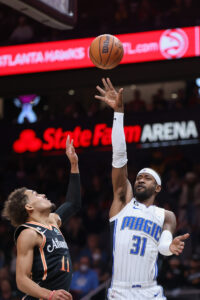 The NBA’s buyout market has been active since the trade deadline and could feature several more moves in the coming days and weeks.
The NBA’s buyout market has been active since the trade deadline and could feature several more moves in the coming days and weeks.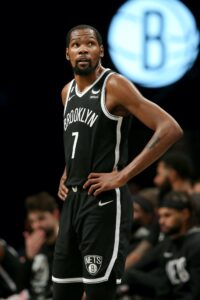 The Suns go all-in for a future Hall of Famer (
The Suns go all-in for a future Hall of Famer ( The Warriors move on from a former No. 2 overall pick in yet another four-team deal (
The Warriors move on from a former No. 2 overall pick in yet another four-team deal (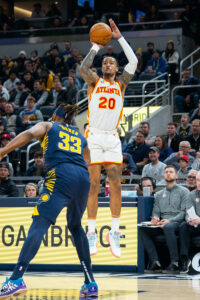
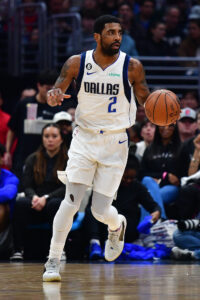 The Nets grant Kyrie Irving’s trade request (
The Nets grant Kyrie Irving’s trade request (